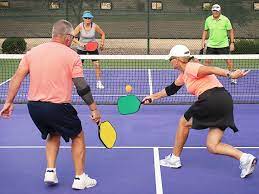
Exercise helps you maintain a healthy weight and prevent chronic diseases ranging from heart disease to diabetes. The Physical Activity Guidelines for Americans recommend that adults get a minimum of 2.5 to 5 hours of moderate-intensity aerobic physical activity each week, or at least half that amount of vigorous-intensity activity.
Previous studies have found that a wide variety of leisure-time physical activities can provide health benefits. But these studies have largely been done in younger adults. And many did not track different levels of various types of activities.
To understand whether older adults benefit from various types of exercises, NIH researchers led by Dr. Eleanor Watts analyzed data from more than 272,000 participants in a national health survey. The participants were first surveyed in the mid-1990s. When they responded to a follow-up questionnaire between 2004 and 2005, they had an average age of 70.
The study captured information on health conditions, habits like smoking and alcohol use, socioeconomic status, and diet. It also recorded participation in seven different recreational activities. These were running or jogging, cycling (outdoors or on a stationary bike), swimming, other aerobic exercise (such as aerobics class or using exercise machines), racquet sports, golf, and walking.
The researchers examined the risk of death during the 12 years of the study. They compared reductions in that risk provided by different levels and different types of physical activity. Results were published on Aug. 24, 2022, in JAMA Network Open.
Among older adults who exercised regularly, walking was the most common activity. That was followed by other aerobic exercise, cycling, golf, swimming, running, and racquet sports. Older adults who participated in any combination of these activities but did not meet the recommendations in the physical activity guidelines had a 5% lower risk of death during the study then those who were inactive.
Those considered active — with at least the amount of aerobic activity recommended by the guidelines — had a 13% lower risk of death compared with inactive participants. Participation in racquet sports and running was associated with the greatest risk reductions, but all activities provided benefit.
The risk of death continued to decrease with additional activity beyond the recommended levels. But these returns diminished as activity increased to high and very high levels.
Running was associated with the greatest risk reduction for death from cancer. Racquet sports were associated with the greatest risk reduction for death from heart disease. However, people who got the recommended amount of exercise, regardless of activity, had a reduced risk of death from both cancer and heart disease.
“We found that all types of recreational activities that get people moving are associated with greater longevity,” Watts says. “So, the most important thing an inactive older adult can do to improve their health is find an activity that they enjoy and can stick with.”
